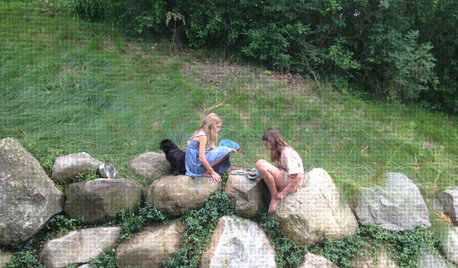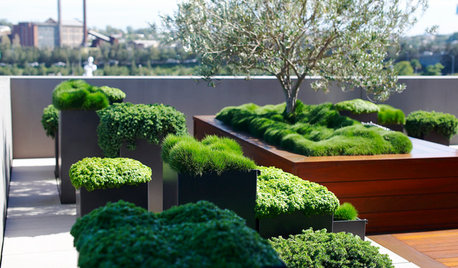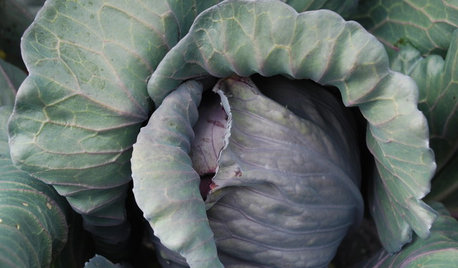Seeking advice re: my plan for turning lawn to organic garden
krm27
9 years ago
Related Stories

LIFETurn Off the Video Games and Turn On Your Kid's Creativity
Going nuts planning summer activities? Kids overdosing on screen time? It may be time to foster more self-directed play
Full Story
FARM YOUR YARDAdvice on Canyon Farming From L.A.'s Vegetable Whisperer
See how a screened garden house and raised beds help an edible garden in a Los Angeles canyon thrive
Full Story
FRONT YARD IDEASBefore and After: Front Lawn to Prairie Garden
How they did it: Homeowners create a plan, stick to it and keep the neighbors (and wildlife) in mind
Full Story
GARDENING GUIDESHow to Switch to an Organic Landscape Plan
Ditch the chemicals for a naturally beautiful lawn and garden, using living fertilizers and other nontoxic treatments
Full Story
LANDSCAPE DESIGNSee How to Turn a Small Outdoor Room Into a Peaceful Retreat
Really, that neglected terrace or courtyard can become the garden of your dreams
Full Story
HEALTHY HOMEHow to Childproof Your Home: Expert Advice
Safety strategies, Part 1: Get the lowdown from the pros on which areas of the home need locks, lids, gates and more
Full Story
REGIONAL GARDEN GUIDESWelcome the Turning Season: Advice for Your September Garden
Roll with the cooler weather by planting away. Our gardening guides tell you what plant picks are best for each U.S. region
Full Story
GARDENING GUIDESWhat Are Your Spring Gardening Plans?
Tearing out the lawn? Planting edibles? Starting from scratch? Tell us what you plan to change in your garden this year
Full Story
LIFEGet the Family to Pitch In: A Mom’s Advice on Chores
Foster teamwork and a sense of ownership about housekeeping to lighten your load and even boost togetherness
Full Story
KITCHEN DESIGNSmart Investments in Kitchen Cabinetry — a Realtor's Advice
Get expert info on what cabinet features are worth the money, for both you and potential buyers of your home
Full Story







Fricky
Kimmsr
Related Professionals
Carlisle Landscape Architects & Landscape Designers · Forest Park Landscape Architects & Landscape Designers · Medford Landscape Contractors · Cincinnati Landscape Contractors · Galveston Landscape Contractors · Plantation Landscape Contractors · Raleigh Landscape Contractors · Thonotosassa Landscape Contractors · Tigard Landscape Contractors · Vashon Landscape Contractors · Malibu Outdoor Lighting & Audio Visual Systems · Auburn Decks, Patios & Outdoor Enclosures · Hialeah Decks, Patios & Outdoor Enclosures · Hot Springs Village Decks, Patios & Outdoor Enclosures · Huber Heights Decks, Patios & Outdoor Enclosuresgardengal48 (PNW Z8/9)
humbll
krm27Original Author
Kimmsr